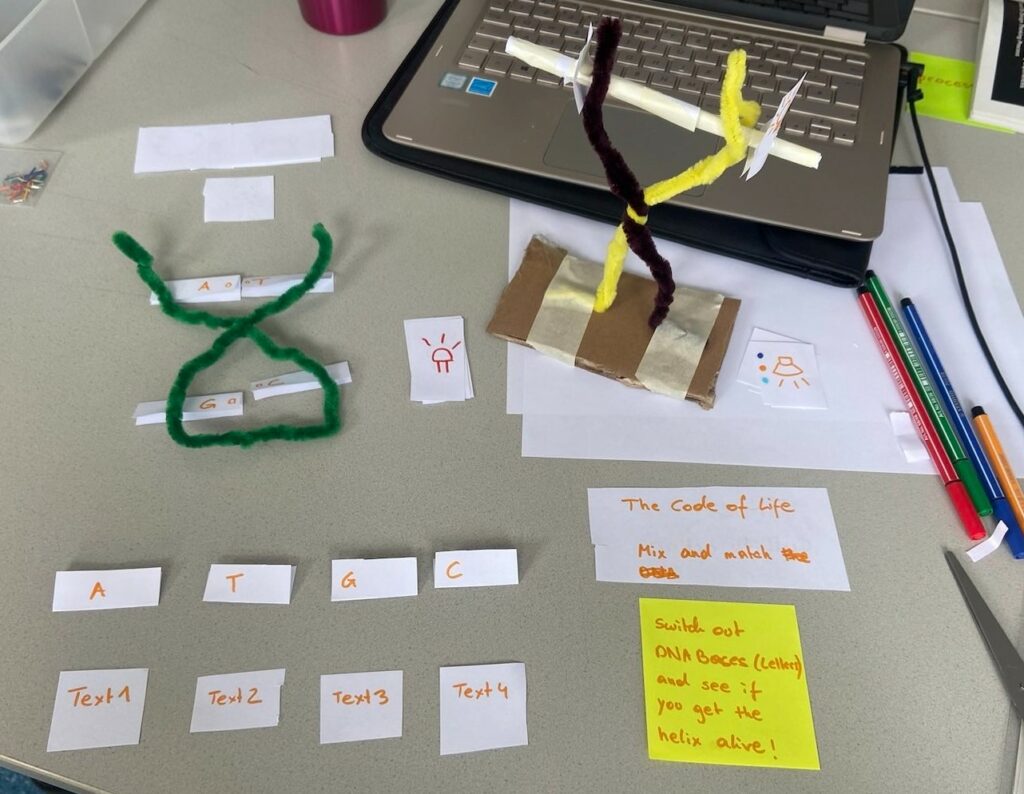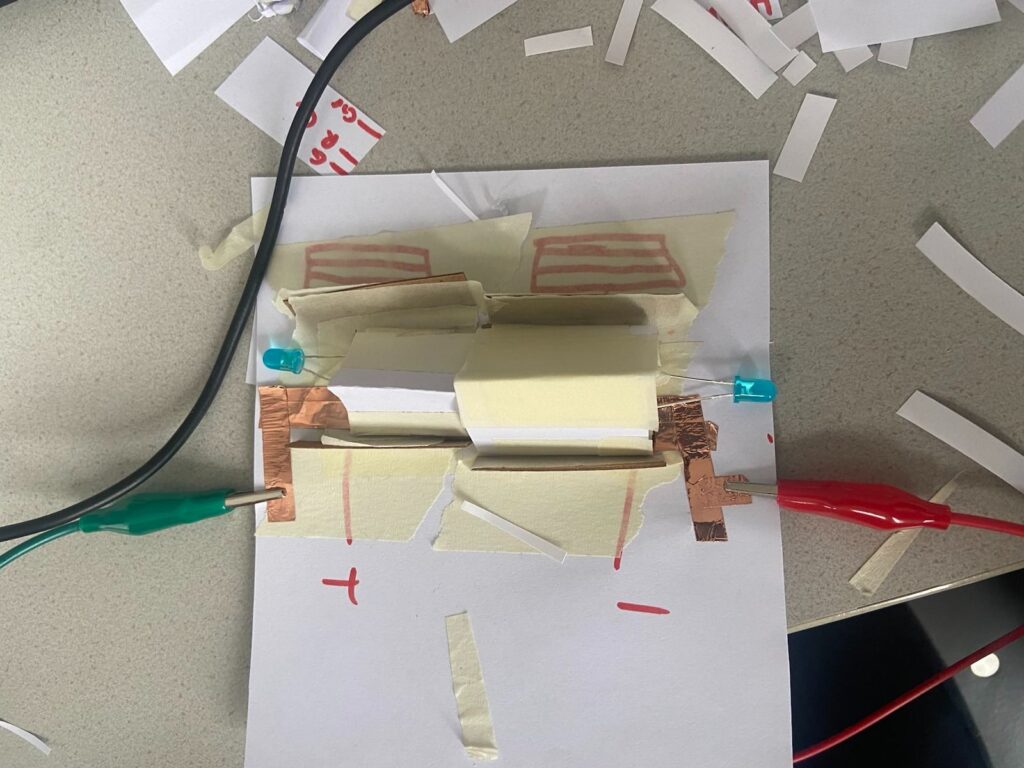This blogpost is about my experience I made in a workshop about “Tangible Scientific Concepts” and the Design Process it is based on. The Workshop was held by Carla Molins Pitarch who is based in Barcelona and currently finishing her PhD at the Pompeu Fabra University (Spain).
How can a code with only four letters (A, C, G, and T) create so many different proteins necessary for your body? Could we humans encode it better? The one-week workshop aims to question the current systems for encoding DNA and reconsider an infinite array of interactive visual systems with a hands-on approach and critical thinking.
In the following section I will describe the prototyping process of my group and outline what I learned during this intensive week.
The project was developed together with Theresa Dietinger and focuses on the exploration of the DNA Bases “Letters“ by trying out how the physical representations fit together.
First Phase: Ideation

In this phase we wrote all our ideas on a flipchart, clustered our interests and focused on one idea.
Second Phase: Testing
In this phase we created a wireframe prototype and performed the first user tests with our colleges to get new insights and discover problems we didn’t think of.

Third Phase: Prototyping
In this phase we developed the logical states needed to indicate whether the physical representations of the DNA Letters fit together. If the Letters don’t fit together (for example A and T) a red light will be switched on. If the Letters fit together (for example A and C) a green light will be switched.

Forth Phase: Final Prototype
Here you can see our finished prototype with the installed LEDs on both sides of the physical DNA Letters.

In this workshop I experienced the importance of simplifying complex topics as much as possible. Focusing on one specific part and making sure you don’t overwhelm your audience is the key to make them excited and raise interest for further reading at home.